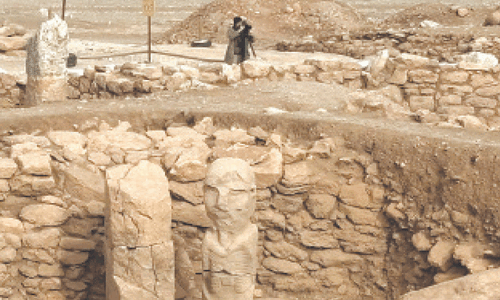
China's ambitious Belt and Road Initiative (BRI) gets top international billing this weekend as delegations from over 100 states, including 28 world leaders, gather in Beijing for a summit showcasing the world’s first massive cross-continental connectivity master plan.
It’s going to be quite a party. And so it should. With billions of dollars of planned investments ranging from ports in Pakistan and Sri Lanka to high-speed railways in Europe and Africa to gas pipelines in Central Asia, the BRI is unparalleled in its scope, vision and the amount of money involved.
And the multi-trillion dollar initiative to connect China with Europe, Asia and Africa is gathering momentum as more and more countries sign up, old and new projects are brought under the BRI umbrella and China begins to address some of the concerns voiced by partner countries and critics.
Estimates about the amount of money involved in the plan vary enormously. Credit Suisse Group AG says the BRI could funnel investments worth as much as $502 billion into 62 countries over five years. Other estimates put the BRI bill much higher.
The main point to remember is that the blueprint is an evolving one. Projects in New Zealand, Britain and the Arctic are now within the BRI embrace. Others could come in later.
And while the money at stake is important for the countries engaging in the plan, the BRI is about more than just investments.
Make no mistake: this is about fashioning a new world order, one where Washington no longer calls the shots. And that’s exactly what is scaring many.
First mentioned by Chinese President Xi Jinping in 2013, the BRI clearly articulates China’s vision of its role in a changing and increasingly uncertain global order.
The timing is perfect. As US President Donald Trump continues to send mixed messages on his international commitments and the strength of his global engagement, including on trade and investments — and Europe grapples with Brexit and other crisis — the Chinese initiative is securing additional traction and credibility.
Not surprisingly, Washington and Tokyo are not too pleased. Europe is interested but cautious. Other countries are happy to engage and see how they can best benefit from the plan.
So what do we know about the BRI?
First, it’s undoubtedly and unabashedly about geopolitics and geo-economics and China’s self-confident repositioning of itself on the global stage.
While Washington and Tokyo — and some countries in Europe — may think such a rejigging of the world could be dangerous, many other states aren’t too worried.
After all, “Brand America” isn’t too popular in many parts of the globe. And while China isn’t always the gentlest of interlocutors, many countries are ready for a change.
Second, the BRI is only part of the story. Significantly, China’s Asian Infrastructure Investment Bank (AIIB) is working in tandem with the BRI, to meet the world’s enormous infrastructure investment needs. The $40bn Silk Road Fund is also an important tool to finance infrastructure projects.
And even as the US withdraws from the Trans-Pacific Partnership (TPP), the pan-Asian (excluding China) trade pact, China and countries in the Association of Southeast Asian Nations (Asean) are moving ahead with the Regional Comprehensive Economic Partnership (RCEP) trade deal to boost trade within the region.
Importantly, President Xi, who made a strong stand for globalisation and trade liberalisation at the Davos World Economic Forum in January this year, is expected to do so again at the BRI Forum.
Third, there’s little doubt that the world needs to get better connected. Global infrastructure needs are enormous. Better connectivity is crucial for trade, to attract investments and to achieve some of the most crucial anti-poverty goals included in the Agenda 2030 sustainable development goals.
Fourth, BRI is not just about helping others. Search for new engines for domestic economic growth are the main driver. China wants to boost growth in the western regions which lag behind the well-developed east coast. Steel and cement are in oversupply and will be used in the BRI projects. There will be job creation for thousands of Chinese workers but also foreign nationals involved in the project.
Fifth, this is about learning by doing. Chinese academics admit that Beijing is using the BRI to learn more about operating on the global stage. “China is a late-comer as a global player,” according to a Chinese scholar. “We are in the process of learning how to act.”
While doing so, China is also changing. Slowly but surely, the focus is shifting to ensuring that the BRI becomes more transparent, procurement rules become more rigorous and projects fit in with the sustainable development goals, including environmental standards.
Significantly, as the initiative gains additional traction, China will have to conduct itself as a “traditional” development partner, abandoning its “non-interference” policies for a stance which is more concerned about the domestic affairs of its partner states, including issues like governance and terrorism.
Beijing insists that the BRI will be inclusive and open to other countries, as well as complement existing regional frameworks such as European Union, the African Union and Asean.
Finally, for all the Western concerns that the BRI will allow China to steamroll its partners, destroying everything and everyone in its path, the facts on the ground are very different.
In most countries, China is not the only actor in town. Most states still have access to US and European funds, not to mention aid from Japan and Saudi Arabia.
It’s not a zero-sum game. Most governments taking part in the BRI will also keep their contacts with Western governments, Japan and other international donors.
“We are not taking sides. The BRI will help us to fund our massive infrastructure needs. It’s a great opportunity — but we’re also doing our homework,” a Southeast Asian diplomat told this correspondent. “We will be in the lead. China knows and understands that.”
—The writer is Dawn’s correspondent in Brussels
Published in Dawn, May 13th, 2017
































